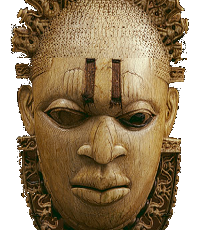6. Africa
All human beings are Africans. It was in today’s Ethiopia, some 200,000 years ago, that the first settlements of homo sapiens were established. From this origin, we gradually came to migrate to every corner on the planet. Africa is an enormous continent, occupying a fifth of the world’s landmass. It includes a number of radically different climates and environments: from dense jungles to extensive grasslands, and it includes the Sahara, a desert the size of Europe. Africa is actually larger than we think since the Mercator projection used for most world maps under-represents the true size of territories around the equator — and Africa straddles the equator. Africa has at least a thousand languages and many more ethnic groups. In order to talk sensibly about this diversity, we have to divide the continent into regions. The most commonly made distinction is between “North Africa” and “Sub-Saharan Africa,” with the Saharan desert dividing the two.
North Africa has a coastline along the Mediterranean Sea and from the very beginning, people here have interacted with people in the Middle East and Europe. Pharaonic Egypt, one of the world’s oldest civilizations, dating back to 3000 BCE, is located in North Africa and so is Carthage, in today’s Tunisia, which for hundreds of years was Rome’s main adversary. Northern Africa was one of the first parts of the world to convert to Christianity, with an important center of scholarship in Alexandria, Egypt. The kings of today’s Ethiopia converted to Christianity in the fourth century. Later, in the seventh century, North Africa was overrun by Muslim armies. In the eleventh century, two Berber kingdoms, located in today’s Morocco, invaded Spain.
South of the Sahara — in Sub-Saharan or “Black” Africa — most people speak Bantu languages. The Bantu speakers originated in western and central parts of the continent but started moving east and southward in the first millennium BCE, spreading their language, cultural practices, and crafts. The political organization of Sub-Saharan Africa has been strongly influenced by nature and by the climate. Along much of the coast of Sub-Saharan African there are rainforests that can stretch up to 300 kilometers inland, and around the equator — in today’s Congo — there is a continuous band of jungle. In the rainforest the climate is hot and humid, vegetation is dense and light is often blocked by trees that can grow to be up to 50 meters tall. The jungle is a generous environment that provides for its inhabitants, despite the presence of scourges such as the tsetse fly, an insect that carries disease. But the communities created here were small, and they had little by means of political institutions.
Away from the coastal regions and the jungles around the equator, there is savanna, less dense woodlands and in eastern Africa also high mountains. The savanna with its grass is an ideal environment in which to raise animals and often it was possible to plants crops. Far larger societies could be established here than in the rainforest. These societies had a more elaborate division of labor, meaning that people could take up specialized tasks and professions. States on the savanna grew rich from trade and manufacturing; they taxed the people subject to them, and they built flourishing capitals administered by public bureaucracies and ruled by laws. In many cases, the savanna-states expanded their power over their neighbors, either by outright occupation or by tying them together into networks of allies and tribute bearers. In this way a number of powerful states were created — including Nubia in today’s Sudan; Benin, Mali, Songhai and the Asante in western Africa; Ethiopia, Bunyoro and Buganda in eastern Africa; and Zimbabwe in the south.















